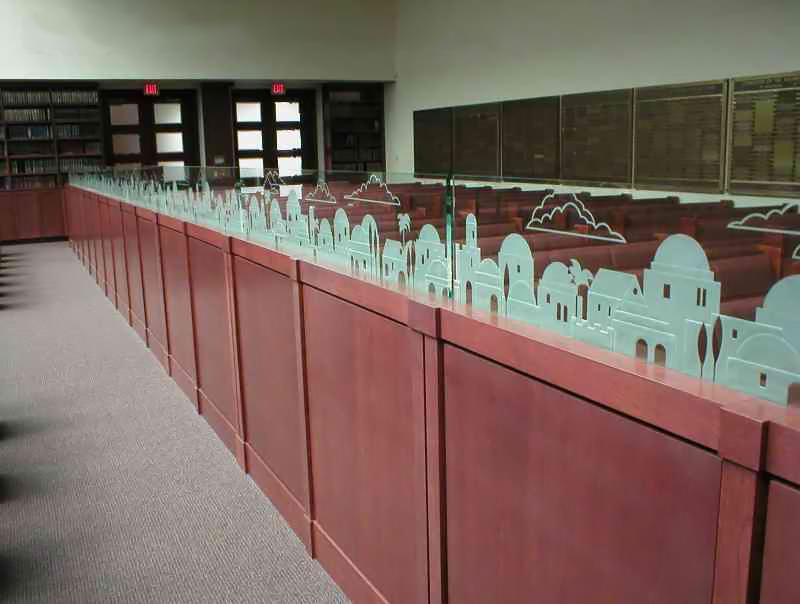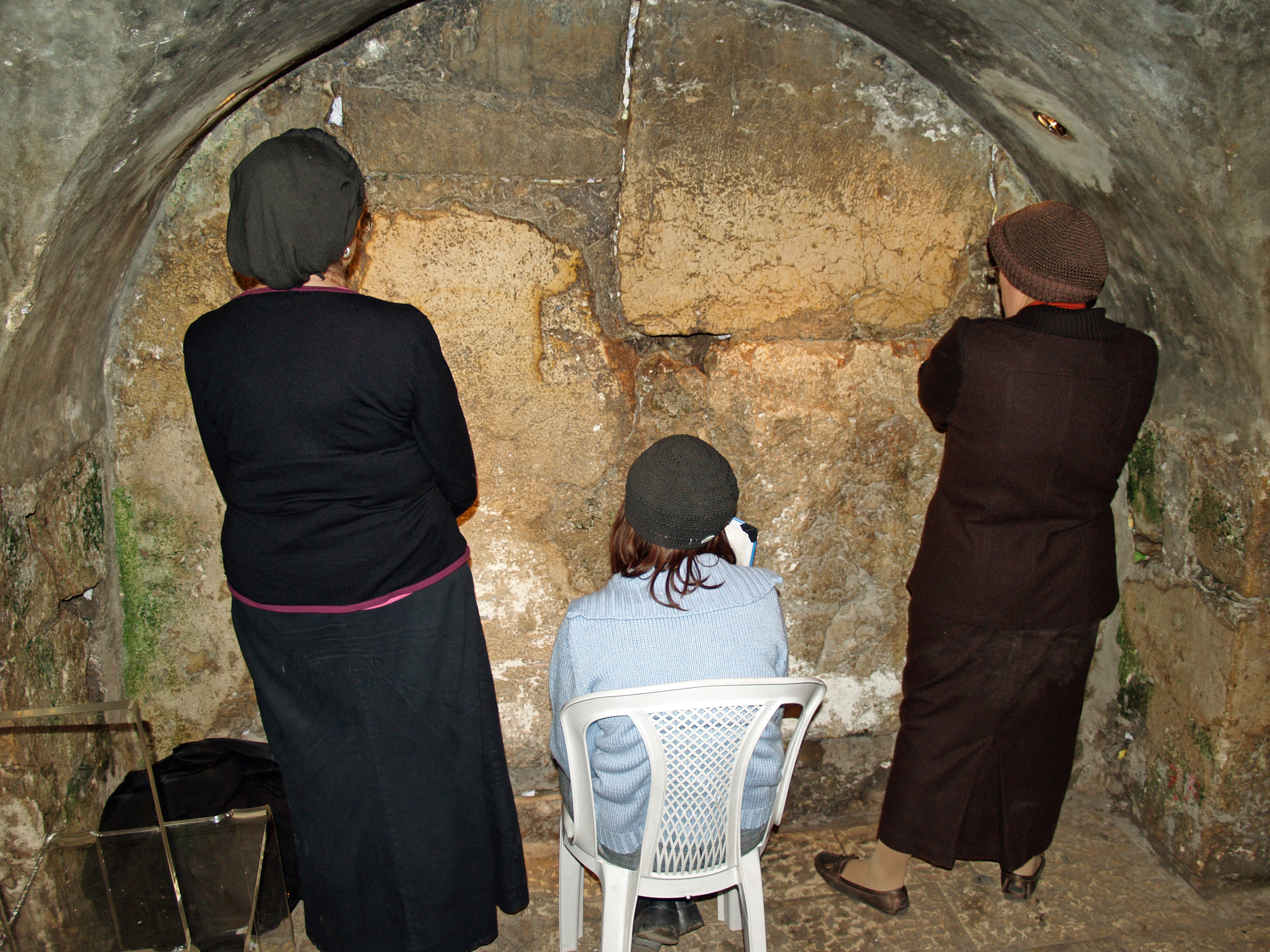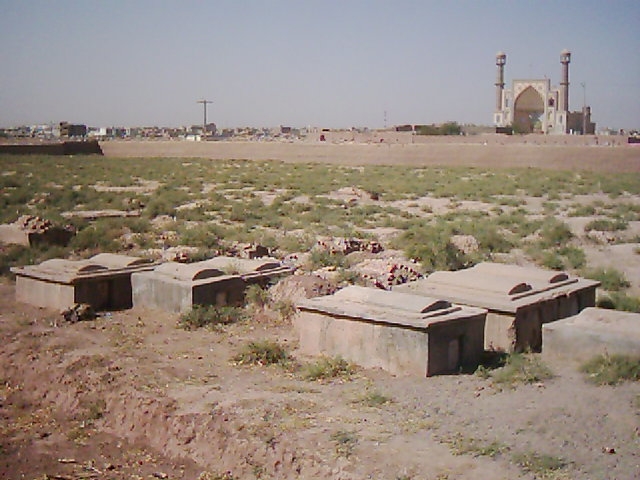|
Mechitza
A ''mechitza'' ( he, מחיצה, partition or division, pl.: , ) in Judaism, is a partition, particularly one that is used to separate men and women. The rationale in halakha (Jewish law) for a partition dividing men and women is derived from the Babylonian Talmud. A divider in the form of a balcony was established in the Temple in Jerusalem for the Simchat Beit HaShoeivah ceremony, a time of great celebration and festivity. The divider was first established to preserve modesty and attention during this time. During the mid-20th century, a substantial number of Orthodox synagogues did not have mechitzot. However, the Orthodox Union (OU), the main body of Modern Orthodox synagogues in the United States, adopted a policy of not accepting as new members synagogues without mechitzot, and strongly encouraged existing synagogues to adopt them. Men and women are generally not separated in most Conservative synagogues, but it is a permissible option within Conservative Judaism; some ... [...More Info...] [...Related Items...] OR: [Wikipedia] [Google] [Baidu] |
Orthodox Judaism
Orthodox Judaism is the collective term for the traditionalist and theologically conservative branches of contemporary Judaism. Theologically, it is chiefly defined by regarding the Torah, both Written and Oral, as revealed by God to Moses on Mount Sinai and faithfully transmitted ever since. Orthodox Judaism, therefore, advocates a strict observance of Jewish law, or '' halakha'', which is to be interpreted and determined exclusively according to traditional methods and in adherence to the continuum of received precedent through the ages. It regards the entire ''halakhic'' system as ultimately grounded in immutable revelation, and beyond external influence. Key practices are observing the Sabbath, eating kosher, and Torah study. Key doctrines include a future Messiah who will restore Jewish practice by building the temple in Jerusalem and gathering all the Jews to Israel, belief in a future bodily resurrection of the dead, divine reward and punishment for the righteo ... [...More Info...] [...Related Items...] OR: [Wikipedia] [Google] [Baidu] |
Firzogerin
A ''firzogerin'', (; ), alternately ''vorsangerin'', ''foreleiner'', ''zugerin'', or ''zugerke'', was a historic role in the synagogue for a learned Jewish woman leading women in prayer from the ''weibershul'' (women's gallery or annex) as a precentress, parallel to the main service led by a male chazzan. Role Gender-segregated seating within synagogues was common from the early Middle Ages well into the modern period. The ''firzogerin'' stood in the front of the women's gallery, balcony, or annex and translated the Hebrew prayers into the vernacular language for the other women who had come to pray. Sometimes the ''firzogerin'' translated more or less exactly; other times she translated freely and added her own interpretation. This parallel prayer system was probably welcome to women for whom the Hebrew liturgy, due to their lack of education, was largely incomprehensible. The ''firzogerin'' attained her status because she was more knowledgeable than most women, often acqu ... [...More Info...] [...Related Items...] OR: [Wikipedia] [Google] [Baidu] |
Synagogue
A synagogue, ', 'house of assembly', or ', "house of prayer"; Yiddish: ''shul'', Ladino: or ' (from synagogue); or ', "community". sometimes referred to as shul, and interchangeably used with the word temple, is a Jewish house of worship. Synagogues have a place for prayer (the main sanctuary and sometimes smaller chapels), where Jews attend religious Services or special ceremonies (including Weddings, Bar Mitzvahs or Bat Mitzvahs, Confirmations, choir performances, or even children's plays), have rooms for study, social hall(s), administrative and charitable offices, classrooms for religious school and Hebrew school, sometimes Jewish preschools, and often have many places to sit and congregate; display commemorative, historic, or modern artwork throughout; and sometimes have items of some Jewish historical significance or history about the Synagogue itself, on display. Synagogues are consecrated spaces used for the purpose of Jewish prayer, study, assembly, ... [...More Info...] [...Related Items...] OR: [Wikipedia] [Google] [Baidu] |
Tzniut
''Tzniut'' ( he, צניעות , , ; "modesty" or "privacy"; ) describes both the character trait of modesty and discretion, as well as a group of Jewish laws pertaining to conduct. The concept is most important within Orthodox Judaism. Description ''Tzniut'' includes a group of Jewish laws concerned with modesty of both dress and behavior. In the Babylonian Talmud, Rabbi Elazar Bar Tzadok interprets the injunction at Micah 6:8 to "go discreetly with your God" as referring to discretion in conducting funerals and weddings. The Talmud then extends his interpretation: "If in matters that are generally performed in public, such as funerals and weddings, the Torah instructed us to go discreetly, matters that by their very nature should be performed discreetly, such as giving charity to a poor person, how much more so must one take care to do them discreetly, without publicity and fanfare". In the legal dimension of Orthodox Judaism, the issue of ''tzniut'' is discussed in mor ... [...More Info...] [...Related Items...] OR: [Wikipedia] [Google] [Baidu] |
Zechariah (Hebrew Prophet)
Zechariah ''Zakariya''' or ''Zakkariya''; el, Ζαχαρίας ''Zakharias''; la, Zacharias. was a person in the Hebrew Bible traditionally considered the author of the Book of Zechariah, the eleventh of the Twelve Minor Prophets. Prophet The Book of Zechariah introduces him as the son of Berechiah, the son of Iddo. The Book of Ezra names Zechariah as the son of Iddo, but it is likely that Berechiah was Zechariah's father, and Iddo was his grandfather. His prophetical career probably began in the second year of Darius the Great, king of the Achaemenid Empire (520 BCE). His greatest concern appears to have been with the building of the Second Temple. Possible allusion by Jesus He was probably not the "Zacharias" mentioned by Jesus in the Gospel of Luke and the Gospel of Matthew, "from the blood of innocent Abel to the blood of Zacharias the son of Barachiah, whom you murdered between the sanctuary and the altar". Jesus' words are interpreted as: from the first victim of ... [...More Info...] [...Related Items...] OR: [Wikipedia] [Google] [Baidu] |
Haredi Judaism
Haredi Judaism ( he, ', ; also spelled ''Charedi'' in English; plural ''Haredim'' or ''Charedim'') consists of groups within Orthodox Judaism that are characterized by their strict adherence to ''halakha'' (Jewish law) and traditions, in opposition to modern values and practices. Its members are usually referred to as ultra-Orthodox in English; however, the term "ultra-Orthodox" is considered pejorative by many of its adherents, who prefer terms like strictly Orthodox or Haredi. Haredi Jews regard themselves as the most religiously authentic group of Jews, although other movements of Judaism disagree. Some scholars have suggested that Haredi Judaism is a reaction to societal changes, including political emancipation, the ''Haskalah'' movement derived from the Enlightenment, acculturation, secularization, religious reform in all its forms from mild to extreme, the rise of the Jewish national movements, etc. In contrast to Modern Orthodox Judaism, followers of Haredi Judaism se ... [...More Info...] [...Related Items...] OR: [Wikipedia] [Google] [Baidu] |
Chazzan
A ''hazzan'' (; , lit. Hazan) or ''chazzan'' ( he, חַזָּן , plural ; Yiddish ''khazn''; Ladino ''Hasan'') is a Jewish musician or precentor trained in the vocal arts who helps lead the congregation in songful prayer. In English, this prayer leader is often referred to as a cantor, a term also used in Christianity. ''Sh'liaḥ tzibbur'' and the evolution of the hazzan The person leading the congregation in public prayers is called the '' sh'liaḥ tzibbur'' (Hebrew for "emissary of the congregation"). Jewish law restricts this role to adult Jews; among Orthodox Jews, it is restricted to males. In theory, any lay person can be a ''sh'liaḥ tzibbur''; many synagogue-attending Jews will serve in this role from time to time, especially on weekdays or when having a Yartzeit. Someone with good Hebrew pronunciation is preferred. In practice, in synagogues without an official Hazzan, those with the best voice and the most knowledge of the prayers serve most often. As pu ... [...More Info...] [...Related Items...] OR: [Wikipedia] [Google] [Baidu] |
Afghanistan
Afghanistan, officially the Islamic Emirate of Afghanistan,; prs, امارت اسلامی افغانستان is a landlocked country located at the crossroads of Central Asia and South Asia. Referred to as the Heart of Asia, it is bordered by Pakistan to the east and south, Iran to the west, Turkmenistan to the northwest, Uzbekistan to the north, Tajikistan to the northeast, and China to the northeast and east. Occupying of land, the country is predominantly mountainous with plains in the north and the southwest, which are separated by the Hindu Kush mountain range. , its population is 40.2 million (officially estimated to be 32.9 million), composed mostly of ethnic Pashtuns, Tajiks, Hazaras, and Uzbeks. Kabul is the country's largest city and serves as its capital. Human habitation in Afghanistan dates back to the Middle Paleolithic era, and the country's Geostrategy, strategic location along the historic Silk Road has led it to being described, pict ... [...More Info...] [...Related Items...] OR: [Wikipedia] [Google] [Baidu] |
Yu Aw Synagogue
The Yu Aw Synagogue ( fa, کنیسای یوآو) is located in the Momanda neighbourhood of the old city of Herat, in western Afghanistan. The area was once known as ''Mahalla-yi Musahiya'', or the "Neighbourhood of the Jews". It is the only synagogue in Herat that has been preserved with most of its original characteristics, although it is currently in a state of disrepair. There is no definitive date of construction of the synagogue. When Israel was founded in 1948, the estimated 280 Jewish families that lived in Herat began leaving. Today, there are no Jews left in the city. In 2020, Al Jazeera reported that part of the complex was restored by the local government in 2009. It is the only synagogue in Herat that has been preserved with most of its original features. Although badly damaged, it was recently converted into an infant school. There are 3 other synagogues in Herat, in a more advanced state of disrepair, two had been converted to schools and one to a mosque. Not far ... [...More Info...] [...Related Items...] OR: [Wikipedia] [Google] [Baidu] |
Spain
, image_flag = Bandera de España.svg , image_coat = Escudo de España (mazonado).svg , national_motto = '' Plus ultra'' ( Latin)(English: "Further Beyond") , national_anthem = (English: "Royal March") , image_map = , map_caption = , image_map2 = , capital = Madrid , coordinates = , largest_city = Madrid , languages_type = Official language , languages = Spanish , ethnic_groups = , ethnic_groups_year = , ethnic_groups_ref = , religion = , religion_ref = , religion_year = 2020 , demonym = , government_type = Unitary parliamentary constitutional monarchy , leader_title1 = Monarch , leader_name1 = Felipe VI , leader_title2 = Prime Minister , leader_name2 = Pedro Sánchez , legislature = ... [...More Info...] [...Related Items...] OR: [Wikipedia] [Google] [Baidu] |
Shlomo Ibn Aderet
Shlomo ben Avraham ibn Aderet ( he, שלמה בן אברהם אבן אדרת or Solomon son of Abraham son of Aderet) (1235 – 1310) was a medieval rabbi, halakhist, and Talmudist. He is widely known as the Rashba (Hebrew: ), the Hebrew acronym of his title and name: Rabbi Shlomo ben Avraham. The Rashba was born in Barcelona, Crown of Aragon, in 1235. He became a successful banker and leader of Spanish Jewry of his time. As a rabbinical authority his fame was such that he was designated as El Rab d'España ("The Rabbi of Spain"). He served as rabbi of the Main Synagogue of Barcelona for 50 years. He died in 1310. Biography His teachers were Nahmanides and Yonah Gerondi. He was a master in the study of the Talmud, and was not opposed to the Kabbala. Aderet was very active as a rabbi and as an author. Under his auspices and through his recommendation, part of the commentary on the Mishnah by Maimonides was translated from the Arabic into Hebrew. His Talmudic lectures ... [...More Info...] [...Related Items...] OR: [Wikipedia] [Google] [Baidu] |


.jpg)
.jpg)

.jpg)

